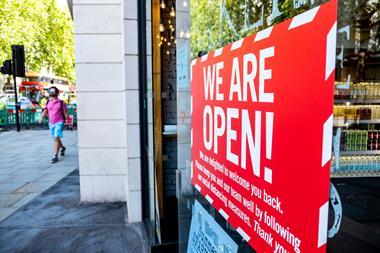Shop prices fell for the 13th consecutive month in June as retailers discounted swathes of products amid the coronavirus crisis.
Prices fell a further 1.6% in June compared to the same month the previous year, according to the latest data from the BRC and Nielsen.
The decline represented an acceleration on the 12-month average drop in prices of 0.8% and the six-month average of 1.2%. It did, however, mark a slowdown from the 2.4% drop in prices recorded in May.
Non-food prices tumbled 3.4% year on year in June, as fashion, electricals and general merchandise retailers looked to shift excess stock at knockdown prices.
Although the fall in non-food prices in June was slower than the 4.6% drop recorded in Maty, the decline was steeper than the 12- and six-month averages of 2.2% and 2.7% respectively.
Food price inflation remained at 1.5% in June, in line with both the rate recorded in May and the 12-month average.
BRC chief executive Helen Dickinson warned that the period of shop price declines, driven by the “challenging” clothing and footwear sectors, could come to an end as the UK prepares for Brexit.
Dickinson said: “Sales have dropped significantly since mid-March and two-thirds of businesses are reporting turnover below pre-crisis levels, meaning there is a serious risk to jobs as a result. The government should focus on stimulating demand in the economy and restoring consumer confidence.
“Coronavirus has been a huge shock to the retail industry and coming on top of this, the threat of the UK leaving the EU without a trade deal is a real concern as it would lead to severe disruptions to supply chains, far beyond those experienced during lockdown, resulting in higher prices and reduced availability in shops. It is imperative that the government secures a deal with the EU or hard-pressed consumers will bear the cost.”
Nielsen head of retailer and business insight Mike Watkins added: “Shoppers have been buying more at supermarkets during lockdown – in particular in grocery and frozen – but also in higher-value categories such as alcohol, where sales have increased over 30% in recent weeks. However, ambient food inflation remains at 2.9% and lower in fresh foods as seasonal produce becomes available.
”Retailers and their suppliers continue to work together to cope with the unprecedented high demand due to the closure of most of the out of home and hospitality channels.”


























No comments yet